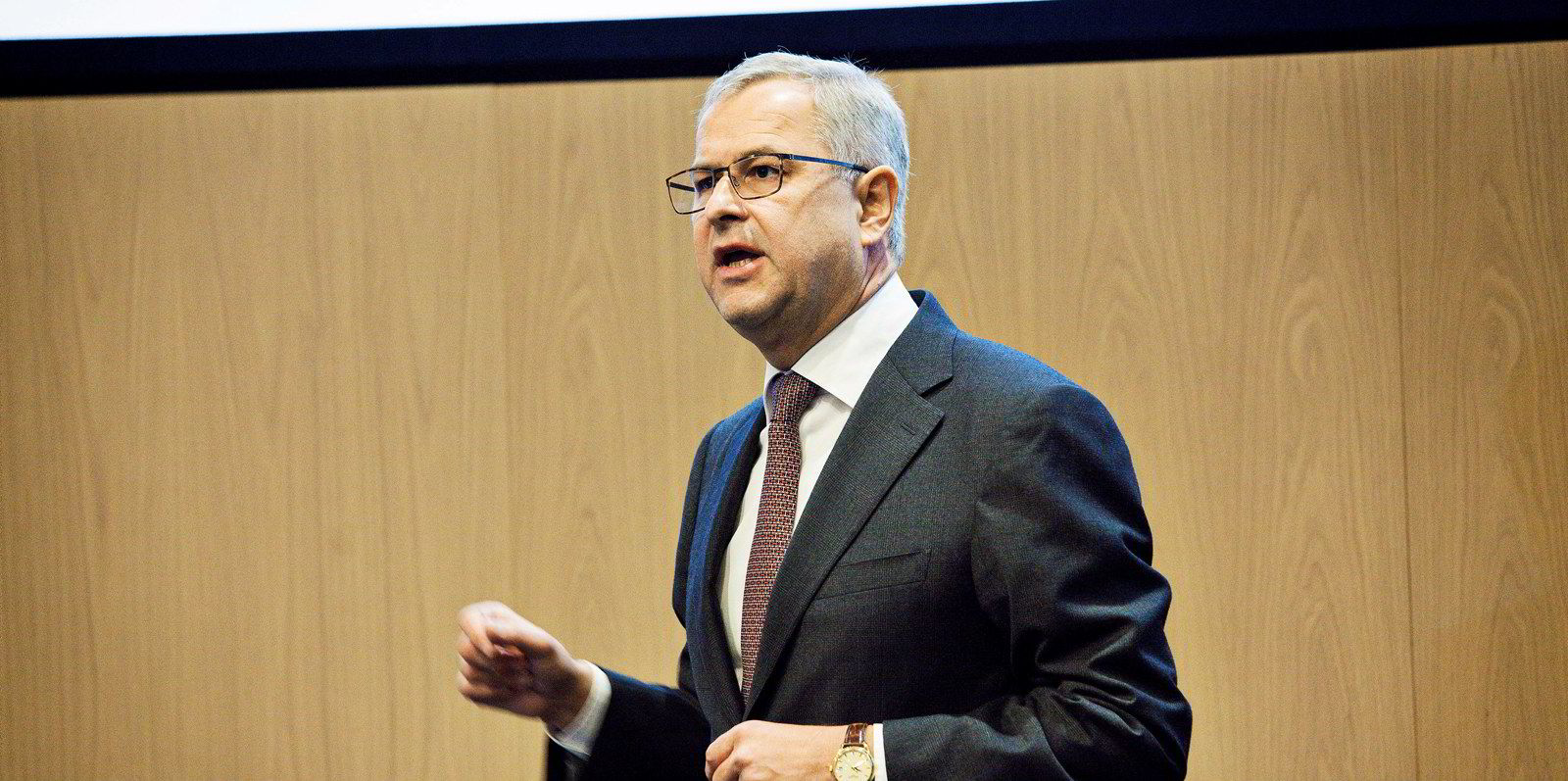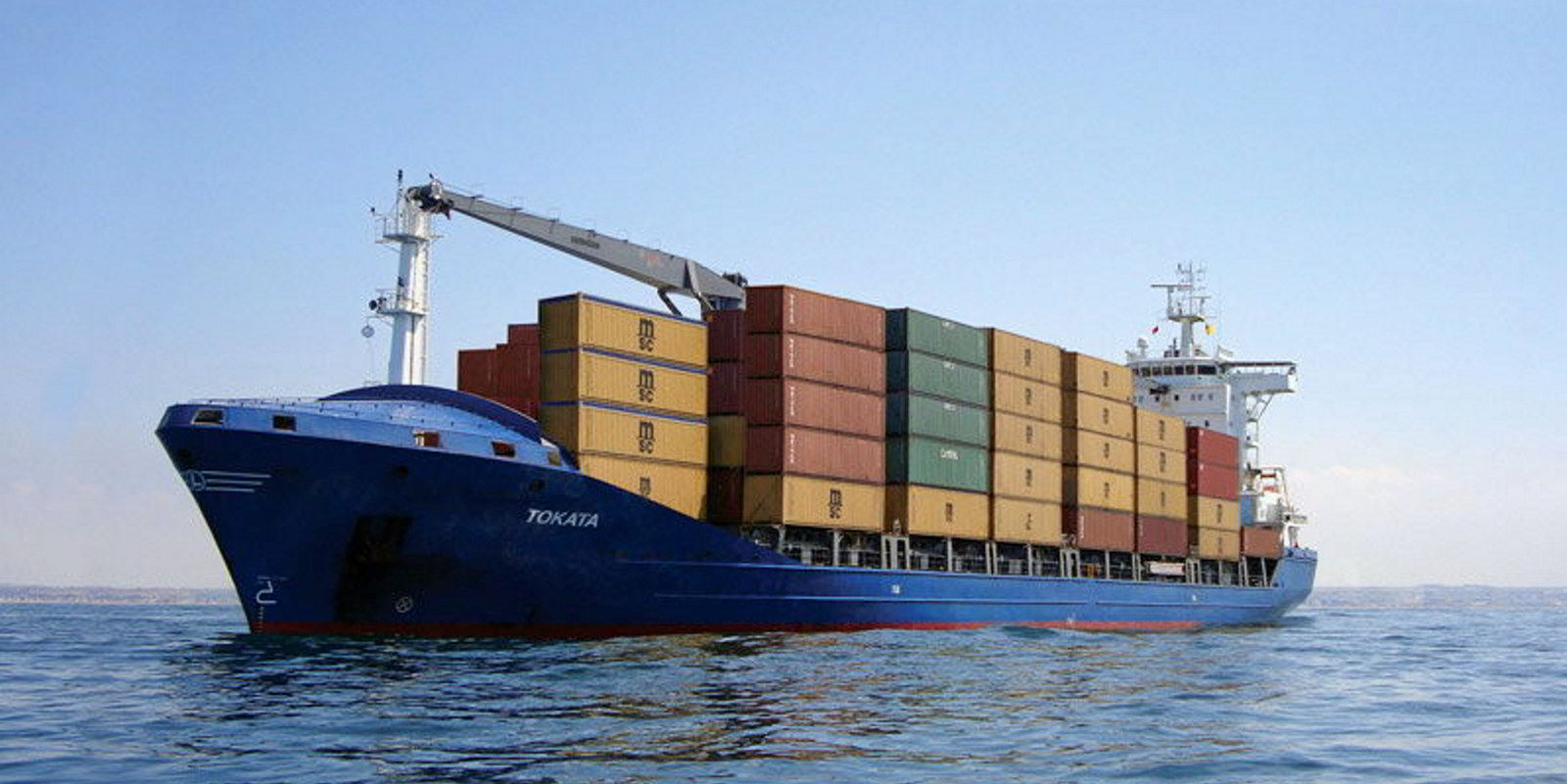Danish container giant AP Moller-Maersk has reported another record quarter as the container shipping gravy train continues to roll.
But the war in Ukraine and flattening trade growth is expected to lead to a contraction of up to 3% in the growth of container volumes this year, the company warned.
The listed liner shipping giant saw Ebitda more than double in the first quarter to $9.1bn as revenues rose to 55% to $19.3bn.
The increase was driven by higher rates and stronger long-term partnerships with customers. Free cash flow increased to $6bn.
Revenues from Maersk’s Ocean division increased 64% to $15.6bn.
Strong rates more than offset a 7% decline in volumes and revenues will continue to be strong this year, the company said.
$10bn windfall
Maersk expects the increase in freight rates in its long-term contract portfolio will add approximately $10bn to revenue in 2022 compared to 2021.
This will more than offset a significant increase in costs which rose 21% in the first quarter.
The rise was due to higher fuel costs, inflationary pressures and container handling costs.
“The increased earnings are driven by freight rates and by contracts being signed at higher levels,” chief executive Soren Skou said.

He added that growth was recorded across the company’s Ocean, Logistics and Terminals divisions.
Revenue in Logistics grew 41% to $2.9bn compared to same quarter last year due to a higher customer base.
Strong demand had led to the fifth quarter in a row with organic growth of more than 30%, Skou said.
That growth in its logistics sector has continued with the $1.68bn acquisition of US logistics operator Pilot Freight Services (PFS).
The acquisition of PFS — to be rebranded Pilot — was completed on 2 May.
Maersk’s terminal division also presented its best quarter ever with revenues of $1.1bn compared to $915m last year.
That was due to higher storage income, improved revenues per move, and volume growth in the overall contracting market.
The return on invested capital (ROIC) ended on a record 12.5%.
That was before an impairment of $485m in terminal operator Global Ports Investment (GPI) following the company’s exit from the Russian market.
The process around the sale of GPI is ongoing, Maersk said.
War clouds
Freight rates were high in the first quarter as Covid-19 and capacity shortages continued to disrupt the supply-side of the logistics industry, Maersk said.
But Russia’s invasion of Ukraine is having a negative impact on trade flows and consumer confidence in Europe, the company said.
Maersk now expects global container demand could shrink this year, and is projecting growth of between -1% and +1%.
That is down from an earlier growth forecast of between 2% to 4%.
Maersk said that trade flow growth had flattened from the Far East to both North America and Europe.
Global container demand declined by 1.2% in the first quarter compared to growth of 8% in 2021.
Maersk has upgraded its guidance for the current year, as outlined in an earnings update issued on 26 April.
The company is now forecasting underlying Ebitda to $30bn this year, $6bn more than previously forecast in February.
The free cash flow will be more than $19bn, revised upwards from $15bn.
The forecast is based on a strong first half of 2022 as well as higher contracted rates, and an assumption that markets will normalise in the second half.







